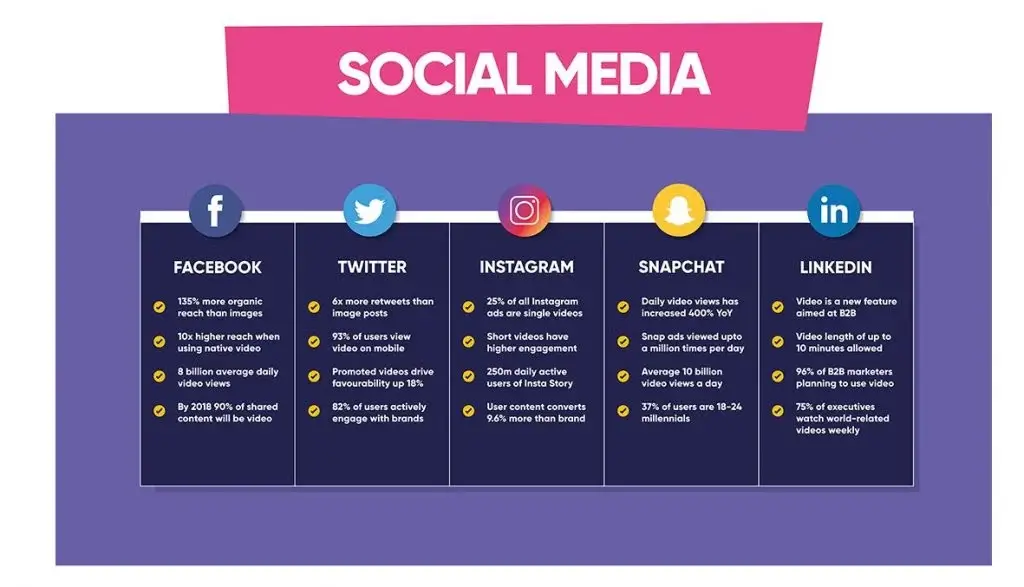Social media has turned into one of the essential elements of modern business and truly represents a powerful medium to communicate with customers, inform them about products, and help build a strong brand image. Yet, there is an endless category of social media platforms and strategies, and it is not easy to point out which one of them fits you perfectly.

Choose the Right Platforms
The platform choice matters a lot For a Successful Business, as it determines how effectively you can reach your target audience. The following paragraph provides instructions on how to go through the procedures of choosing the right platforms.
Define Your Target Audience
Start by defining the audience who you are addressing clearly. Think about dynamics like age, gender, location, occupation, brand choices, and social media profile style. By emphasizing the audience part, your platform selection gets a clear idea.
Identify Platform Features
Not all of the social media platforms are boring pretty much alike. Identify using the types of media that go with those goals of your company along with that of the audience you wish to appeal to. For example, B2B companies might find LinkedIn more effective for communicating and lead generation, while whether companies would be most inclined to focus on Instagram or Pinterest is contingent on whether they primarily focus on visuals. Monitoring a few platforms present on social media rather than spending a huge amount of time on nonexistent platforms.
Recognize the Social Media Platform Options and Functionalities
Every social media platform offers distinct features, content formats, and interaction options. While exploring various platforms, focus more on these characteristics to select the channels that will best complement your content strategy and marketing goals. Consider factors such as:
- Content types (images, videos, text, stories conferences, live streaming).
- Engagement tools like (likes, comments, shares, polls, quizzes).
- Advertising options (targeting, ad formats, budgeting, etc).
- Analytics and Insights (data tracking and performance metrics).

Evaluate Your Content Strategy
Evaluate content strategy and goals to find out what platforms are most relevant to show our content. For example:
- Through visual-centric platforms such as Instagram, Pinterest, and TikTok, creative businesses like that will succeed.
- B2B businesses specializing in professional networking and thought leadership should probably give LinkedIn top priority.
- Tweets are suited for quick information such as news updates, real-time events, and quick interactions.
- Extensive and easily shareable Facebook content can get engagement.
Consider Industry and Competition
Take a look at how your market competitors use social media for their brand. Know what platforms they are active on, their Engagement Rates, content strategies, and the interactions they can generate with audiences. If you will analyze the presence of competitors, this will give you the ability to identify the effectiveness of the platform in your industry.
Start Small and Scale
If you find it hard to decide on which platform to focus on, start with a few key platforms that best fit your target customers and content strategy. Measure key performance indicators such as engagement levels and audience feedback to establish the effectiveness of the system in use. Over time, you can extend this further to other platforms provided the situation requires so.
Tests and Recheck
Be creative and try various outlets, content formats, posting patterns, and interaction tactics to understand how your audience responds. Use analytic tools to measure the key performance metrics including reach, engagement rate, click-through rate, conversion rate, and return on investment (ROI). Keep evolving your strategy by taking into consideration the data-driven information.
Optimize Your Profiles
Taking care to optimize your social media profiles is a key point you should remember as it can provide you with a competitive advantage, increase visibility, and enable you to engage with your audience efficiently. Here is a walkthrough, aimed at facilitating social media profile optimization.
Choose Consistent Branding
Ensure the same styles of logos, cover/banner photos, colour schemes, and content used in different social media profiles. Use your logo or professional headshot (preferably) as a profile picture, which will facilitate the branding.
Catch the reader’s attention with a catchy bio/about-us section
Create the website’s contents like well-written yet brief mission and value proposition sections, tangible offerings, and a separate “About” section to deliver the brand’s essence and uniqueness. Keywords that are related to your industry or field of expertise if used will help increase click-through rates and rank your website amongst others in search results.

Customize URL (If Applicable)
For the social media platform you are using may be LinkedIn or Facebook personalize your brand name or keyword related. A typical API URL is preferential as it is easy to recall and may be visible to search engines.
Complete Additional Profile Sections
Use all the sections among all the platforms you can to position yourself. Fill in information including business category, services/products provided, company size, recognition of awards, certifications, and background. This will enable your audience to access detailed information.
Enable Business Features
Dispatch appropriate business profile functionalities such as Instagram shopping, LinkedIn Company Page, Facebook Business Page tools, Twitter business options, etc. These features improve your business profile functionality and marketing capacity.
Review and Update Regularly
Make a practice to check your social media pages every once in a while and make sure that they represent the core values of your company, and your mission and that they are up to date. Update the contact details, profile picture, cover image, and bio as you innovate your business and bring any changes.
Implement a Content Calendar
Scheduling helps create a content plan which is a marketing strategy and sticking to it. Plan postings to highlight relevant events, holidays, commercial trends, and seasonal periods, plus a promotional calendar. A content calendar is a planning tool, meaning there will be a consistent content flow and a consistent narrative for the branding.
Engage and Interact
Social media often turns into a dialogue. Using your audience, be responsive by replying to posts and messages as soon as possible. Create a discourse, inquire about opinions, organize polls, and encourage your followers to give their feedback, which will strengthen the feeling of community and communication.

Use Visuals Effectively
People are drawn to visual content and social media. You can turn the heads of the audience and present information visually by using images, videos, GIFs, or infographics. Invest in professional-grade visuals or use graphics tools like Canva or Adobe Spark to stylize nice-looking graphics.
Take advantage of Influencer Marketing
Collaboration with influencers can create a lot of content and remarkability. Select the influencers related to your niche and build an effective relationship by engaging in sponsored posts, product reviews, and guest appearances, etc.
Conclusion
Following the above steps and staying flexible with increasing the trends and algorithms, you can freely use social media power to increase your business, connect with your customers and meet your marketing goals. Remember that social media success has to be seen as a marathon, not a sprint, and that to achieve long-lasting success you need to follow the path of consistency, creativity, and a customer-centered approach.

